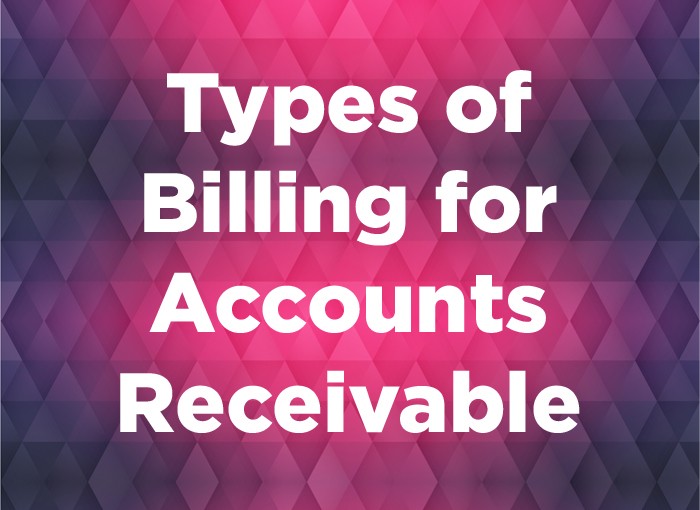Types of Billing for Accounts Receivable
There are various ways to bill accounts receivable in the world of business. However, medical billing uses different billing types as compared to other business sectors. Athough, it is important to learn about all types of billing for accounts receivable as they are closely associated.It may create confusion while billing customers or insurance companies or suppliers. But before that one must understand the meaning of accounts receivable or A/R.
Accounts Receivable
In medical billing, the term accounts receivable (A/R) refers to the amount your client(s) is yet to pay you for the medical services received. This client may be a third party or a patient.
Types of Billing for Accounts Receivable
In general four major types of billing occur, mainly outside the healthcare industry. The four billing types include—prepaid billing, postpaid billing, order-based billing and delivery based billing. These billing types are used for accounts receivable in various business sectors.
- Prepaid Billing: Used by service-based businesses, such as internet service providers or telecommunication companies. In this type of billing the customer has to pay in advance to use any specific service or avail benefits of a particular plan. The customer is required to pay a fixed amount for a set period.
- Postpaid billing: Postpaid billing is the opposite of prepaid billing. In this type of billing the customer receives an invoice from the service provider. The amount mentioned in the invoice is dependent on the type of service or plan that the customer chose to avail from the service provider at the start of the service. The invoice covers charges for a fixed time such as a month or two month. This type of billing might hurt the service provider if a customer has a bad credit history and he refuses to pay the bill.
- Order-Based Billing: This type of billing is done in a wholesale or supply-based business. The customer is required to make full or partial payment in advance while placing the order. In this aspect, the order-based billing is somewhat similar to prepaid billing. In case of partial payment the remaining amount is paid on a later date. The customer receives an invoice or a receipt as a reminder for the remaining payment. The businessman must keep accurate records of the full and/or partial payments for various customers to avoid any confusion.
- Delivery-Based Billing: In this type of billing the customer receives an invoice along with purchased items. The invoice includes details of all the purchased items along with their price and the due payment. The customer is required to make full payment at the time of delivery.
Types of Billing for A/R in Medical Billing
In the case of medical billing, there are two types of billing for accounts receivable — Invoice and Statement.
Invoice: “An invoice requests payment from a customer. An invoice includes the details of a specific receivable such as cost per unit, total cost, and applicable tax. An invoice also provides a payment due date.”
Statement: “It is a presentation of a customer account at a certain point in time that includes the total outstanding amount owed. The statement typically includes the customer’s previous balance, recent transactions, and payments received during the last billing period.”




